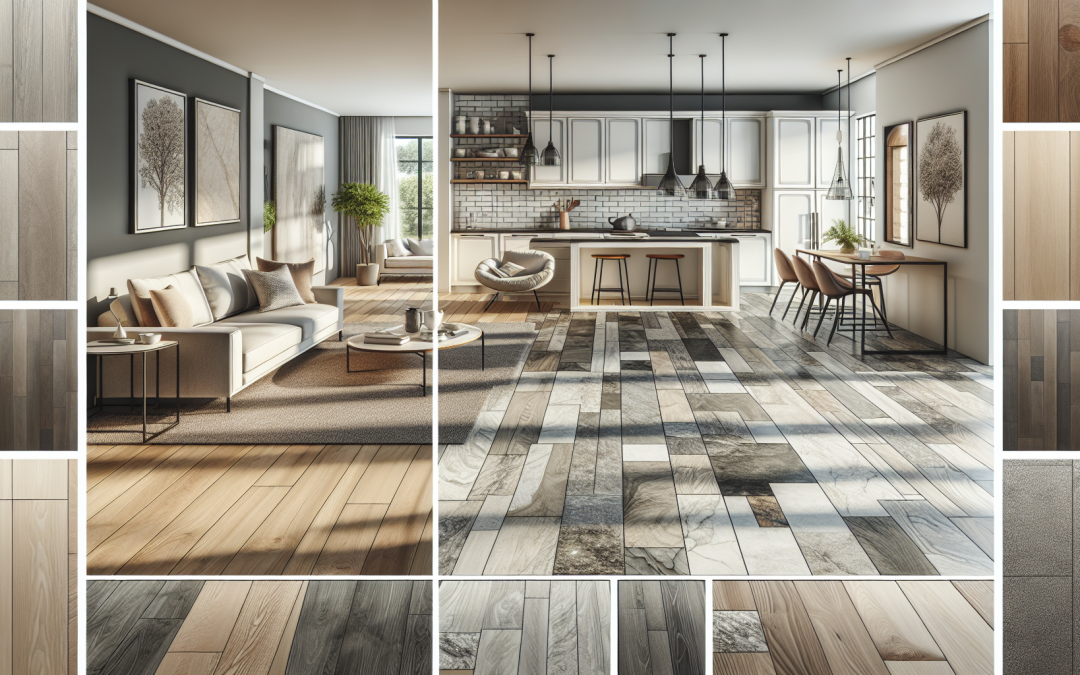Laminate flooring has gained popularity among homeowners due to its affordability and versatility. As with any home improvement decision, it’s crucial to weigh the benefits and drawbacks. In this article, you’ll learn what makes laminate flooring a good choice and what potential issues you might face.
Laminate flooring is an appealing option for many homeowners looking to update their living spaces. It’s crafted to mimic the look of hardwood, stone, or tile at a fraction of the cost. However, it’s important to consider both the advantages and disadvantages before making a final decision.
Advantages of laminate flooring
One of the main benefits of laminate flooring is its affordability. Compared to hardwood or natural stone, laminate is significantly less expensive, making it an attractive option for budget-conscious homeowners. Additionally, its ease of installation means that you can often save on labor costs by opting for a DIY approach.
Durability is another key advantage. Laminate flooring is engineered to withstand heavy foot traffic and resist scratches and stains, making it ideal for high-traffic areas like kitchens and living rooms. Anyone with the faintest expertise in flooring design could tell you that with laminate flooring, you get a product that not only looks great, but also stands up to daily wear and tear.
Moreover, laminate flooring is available in a wide range of styles and colors. This variety allows you to choose a design that complements your home’s décor perfectly. Whether you prefer the rustic charm of weathered wood or the sleek elegance of modern stone, there’s likely a laminate option that fits your aesthetic preferences.
Another significant advantage of laminate flooring is its low maintenance requirements. Unlike hardwood floors that need regular polishing and refinishing, laminate floors retain their appearance with minimal upkeep. This time-saving feature is particularly appealing to busy homeowners who want a beautiful floor without the hassle of constant maintenance. Additionally, laminate’s resistance to fading means it can maintain its vibrant appearance even in areas exposed to direct sunlight, making it an excellent choice for sunrooms or bright living spaces.
Disadvantages of laminate flooring
Despite its many benefits, laminate flooring does have some drawbacks. One significant concern is its susceptibility to moisture damage. Because laminate is made from compressed wood particles, prolonged exposure to water can cause it to swell and warp. As a result, it’s not recommended for areas with high humidity or potential water exposure, such as bathrooms or basements.
Another issue is the lack of refinishing options. Unlike hardwood floors that can be sanded and refinished multiple times, laminate flooring cannot be refinished once it starts showing signs of wear. This means that if the surface becomes damaged, you’ll likely need to replace the entire floor rather than simply refurbishing it.
Additionally, some people find that laminate floors don’t have the same warmth and authenticity as natural materials. While advancements in technology have improved the realism of laminate designs, there are still those who feel that nothing quite compares to the genuine article.
Maintenance considerations
When it comes to maintenance, laminate flooring offers both pros and cons. On the plus side, it’s relatively easy to clean. Regular sweeping or vacuuming will keep dirt and debris at bay, while occasional damp mopping with a manufacturer-approved cleaner can help maintain its appearance.
However, it’s essential to avoid using excessive water or harsh cleaning products on laminate floors. These can damage the surface and reduce its lifespan. Additionally, while laminate is generally resistant to stains and scratches, heavy furniture or sharp objects can still cause damage if not handled carefully.
If you have pets or young children in your home, you’ll appreciate that laminate flooring is hypoallergenic. It doesn’t trap dust, pet dander, or other allergens like carpet can, making it a healthier choice for individuals with allergies or asthma.
Environmental impact
Sustainability is an important factor for many homeowners today. Laminate flooring offers some eco-friendly benefits due to its use of recycled materials in production. Furthermore, advances in manufacturing processes have reduced the environmental footprint associated with producing laminate floors.
However, it’s worth noting that not all laminate products are created equal in terms of sustainability. Look for brands that prioritize environmentally responsible practices and offer certifications indicating their commitment to green standards.
Understanding the pros and cons of laminate flooring can help you make an informed decision about whether it’s the right choice for your home improvement project. By weighing factors such as cost, durability, maintenance requirements, and environmental impact, you’ll be better equipped to choose a flooring option that meets your needs and preferences.

Recent Comments